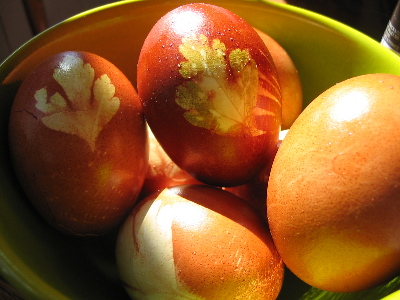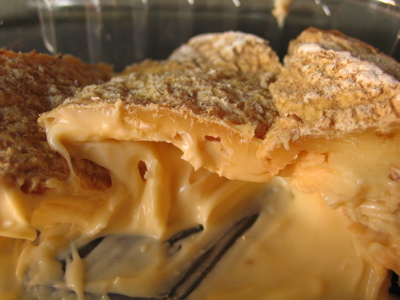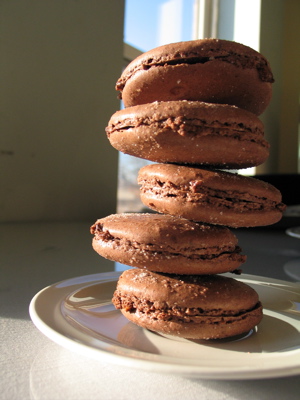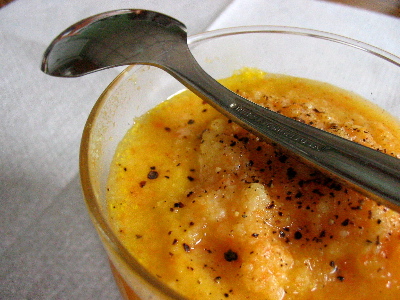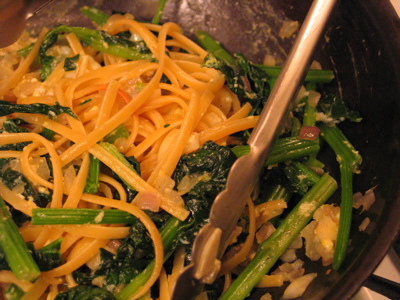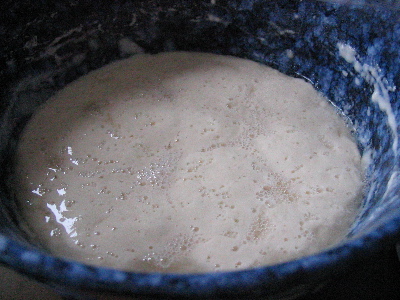
So you have a starter. Perhaps you have made one from scratch, perhaps a friend gave you one, or maybe you even got some dried starter online. If you take good care of it, it will last forever, one generation of yeast and bacteria replacing another, and it will develop its own, distinct, complext taste.
Healthy starter smells a little like apples - a little sweet and mildly acidic. It contains two types of living beings - yeast, and bacteria from the genus Lactobacillus. Yeast produces bubbles of carbon dioxide, which gives the bread volume, and lactobacilli produce lactic and acetic acids, which give the bread flavor. The acetic acid is the really sour stuff here - if there’s too much of it, the starter will smell vinegary. It develops particularlly well at warmer temperatures, so keeping your starter relatively cool is a good thing (70F is good).
All this life has to be sustained, so your starter has to be fed. Let’s assume that you have five ounces of starter sitting around, containing 50% flour and 50% water by weight (this is, in fact, what I have).
The most hassle-free to take care of it is simply to feed every time you bake. There are only two simple principles to be observed: you always have to at least double the weight of your starter when feeding; and you should make sure that after you have taken all the starter you need for baking, you have your 5oz left over for the future. The flour you feed must be unbleached. Organic is best - you don’t have to bake with organic flour, but do give it to your little pets.
So, let’s say your recipe asks for 10oz of levain build (active starter that you will incorporate into bread dough), add 5oz of flour and 5oz of water to your 5oz of starter, and when the mixture is bubbling merrily and ready to use in bread, remove 5oz back into your jar (which you have now washed thorougly - you don’t want any extraneous bacteria in your mix). These 5oz are now refreshed and happy. Unless you are planning to bake again within 8 hours, put the jar in the fridge, in one of the warmer spots - temperatures below 8C (or 46F) are damaging for wild yeast.
If you only need 3oz of levain build for your bread - add 2.5oz flour and 2.5oz water (doubling the weight of your starter); reserve 5oz for the next bake and toss the remaining 2oz.
The more often you bake, the happier and more active your starter will be, but even if you don’t bake for a while, you must feed it at least once a week. In that case, simply toss half of what you have, and add fresh water and flour in correct proportion to double the weight. You may leave it at room temperature for a few hours, or you may put it straight into the fridge - the yeast doesn’t go dormant, it just becomes very very slow. In the next few days you will see your starter bubble and swell in slow motion, and it’s rather cool. Remember to wash the jar regularly - perhaps every other time you feed.
If you notice that your beasties become sluggish, and your levain build takes longer to ripen than usual - all other things being equal, especially the temperature - give them some potato water instead of plain stuff (your next loaf will probably taste a bit of potatoes, but the effect wears off). Alternatively, you can substitute some of the white flour with whole wheat variety or even rye, which contains more nutrients. After the starter perks up, you can gradually go back to all-white.
